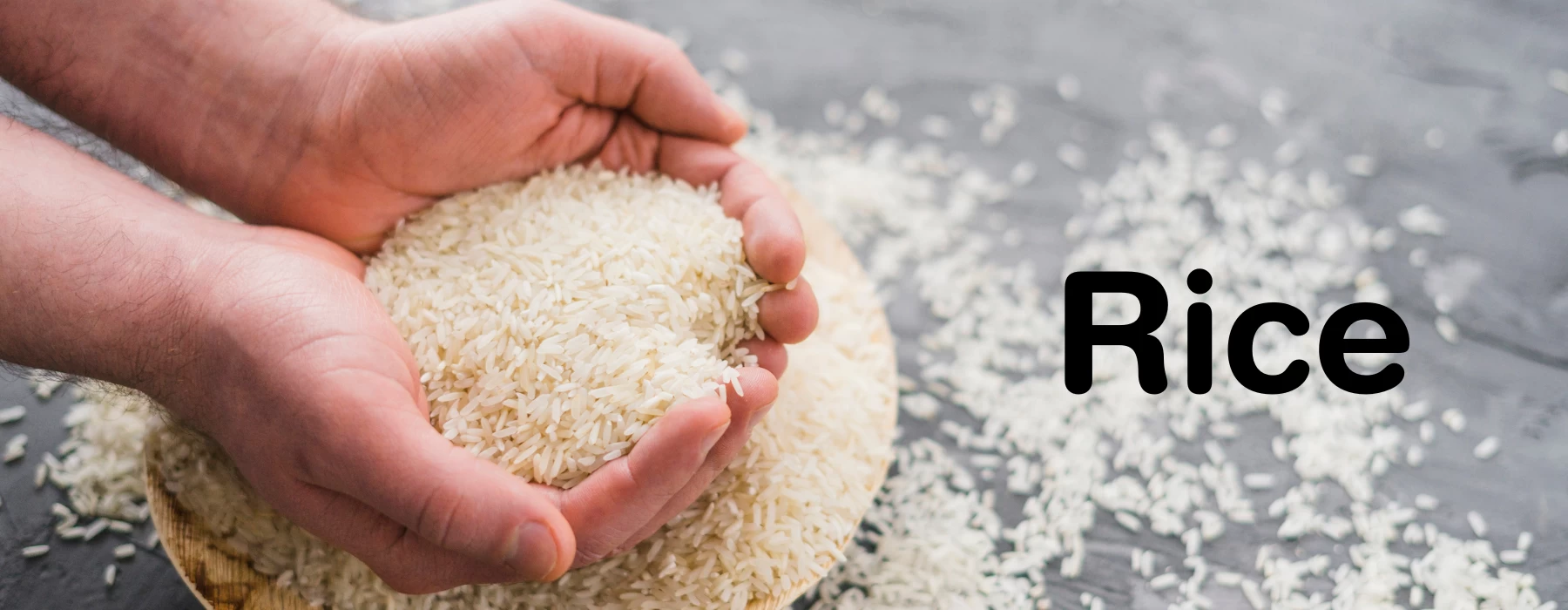Rice
Rice

Rice is a staple food for more than half of the population of the world. They are of two types: white rice and brown rice. White rice is the more common type of rice. However, brown rice provides more health benefits. Nutritional facts of cooked white rice per 100 gms:
|
Calories |
130 |
|
Carbohydrate |
28.7 |
|
Protein |
2.36 |
|
Fat |
0.19 |
Cooked rice contains approx 70% of water. The main carbohydrate found in rice is starch, made of a long chain of glucose, amylose and amylopectin. Rice rich in amylose like basmati rice, don’t stick together after cooking. Whereas rice rich in amylopectin stick together after cooking. Rice rich in amylopectin is easily digestible and so, can increase the blood sugar levels, especially in people with diabetes. In comparison to white rice (containing 1.6 grams fiber per 100 gms), brown rice contains higher amounts of fiber. White rice is refined, polished, but devoid of bran and germ. This increases its taste but decreases its nutritional value. Brown rice is whole grain containing both bran and germ, making it more nutritious. Bran and germ contain vitamins, minerals, fiber, and antioxidants. With a low glycemic index, brown rice is a better option for everyone, especially, diabetic people. Being a whole grain, brown rice can lower the blood cholesterol levels, heart disease, stroke, diabetes, and obesity (American Heart Association). Brown rice also contains antioxidants like lignans and ferulic acid. Lignans are linked with lower heart disease, menopausal symptoms and osteoporosis. Ferulic acid is known for its anti-inflammatory and anti-microbial effects. Comparison of nutrients between white rice and brown rice per 100 gms:
|
Brown rice |
White rice |
|
|
Manganese |
42% of RDI |
16% of RDI |
|
Niacin |
16% of RDI |
3% of RDI |
|
Thiamine |
15% of RDI |
2% of RDI |
|
Selenium |
11% of RDI |
- |
|
Magnesium |
9% of RDI |
2% of RDI |
In addition rice also contains small amounts of pantothenic acid, phosphorus, riboflavin, and vitamin B-6, copper, and folate.
Risk factor associated with white rice is type 2 diabetes. However, brown rice decreases the chance of type 2 diabetes. Brown rice contains antioxidant phytate. It is known to hinder the absorption of essential nutrients like iron and zinc.
